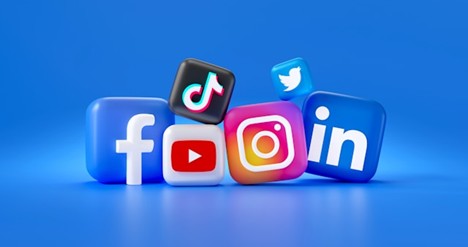Platforms like Facebook, Instagram, X, LinkedIn, and TikTok have become essential channels for brands to reach and engage their audiences. Digital marketing campaigns can drive a range of outcomes—from increased brand awareness to lead generation and sales—but how can brands accurately measure the return on investment (ROI) of their efforts?
Partnering with a social media agency in Philadelphia amplifies the ROI of your campaigns, providing the insights needed to optimize strategies, allocate budgets effectively, and showcase the true value of digital marketing to stakeholders.
Calculating ROI
ROI is a simple yet powerful metric that tells you how much profit or value your business has gained relative to the amount spent on an initiative. It’s a way to assess whether the investment in social networks is worth the resources spent on ads, content creation, campaign management, and other related activities.
To calculate the ROI of marketing campaigns, businesses need to evaluate both the tangible and intangible results of their efforts, measuring both direct and indirect outcomes.
Step 1: Define Clear Goals and Objectives
The first step is to define clear goals for your marketing campaign. What are you trying to achieve with your efforts? Common goals may include:
Brand Awareness: Increasing visibility among your target audience.
Engagement: Building a community of followers who actively interact with your content.
Lead Generation: Collecting contact information or nurturing prospects toward a sale.
Sales: Directly driving revenue through product or service sales.
Customer Loyalty: Strengthening relationships with existing customers to foster repeat business.
Website Traffic: Increasing visits to your website or landing page.
Once you have set these objectives, you’ll be able to align your metrics and determine which KPIs (Key Performance Indicators) are most relevant to tracking ROI. Keep in mind that different objectives will require different methods of measurement.
Step 2: Choose the Right Metrics to Track
Once your goals are set, the next step is identifying the right metrics to evaluate the performance of your campaign. These metrics can be divided into two categories: vanity metrics and actionable metrics.
Vanity Metrics: These are metrics that may look good on paper but do not directly contribute to your business objectives. These include:
Likes: While likes are a positive sign of engagement, they don’t necessarily translate into sales or meaningful interactions.
Comments and Shares: Although these are signs of engagement, they need to be analyzed in context. For example, comments that are negative or irrelevant can skew the data.
Follower Count: While a large number of followers may indicate brand popularity, it’s more important to focus on engaged followers who are likely to convert.
Actionable Metrics: These metrics are more meaningful and directly related to your business goals. Some examples include:
Click-Through Rate (CTR): The percentage of people who click on a link in your post or ad. A higher CTR often indicates that your content is compelling and relevant.
Conversion Rate: The percentage of users who take a desired action after clicking on your content (e.g., making a purchase, filling out a form, signing up for a newsletter).
Cost Per Click (CPC): The amount you pay each time someone clicks on your ad. This is useful for tracking paid campaigns and understanding the effectiveness of your ad spend.
Customer Acquisition Cost (CAC): The cost of acquiring a new customer through online media efforts. This is particularly important for lead generation and sales-oriented campaigns.
Sales Revenue: If your campaign’s goal is to drive purchases, measuring direct revenue generated from social platforms is the most straightforward way to determine ROI.
Step 3: Use Tracking Tools and Analytics
Accurate data collection is key to measuring the success of marketing campaigns. Most platforms provide native analytics tools that allow you to monitor campaign performance in real-time. For example:
Facebook Ads Manager: Provides in-depth metrics like CTR, CPC, conversions, and return on ad spend (ROAS).
Instagram Insights: Allows you to track engagement metrics, follower demographics, and website clicks from Instagram posts and stories.
Twitter Analytics: Helps you evaluate engagement, clicks, impressions, and follower growth on your Twitter account.
LinkedIn Analytics: Gives insight into engagement, content performance, and conversion rates for LinkedIn business profiles and ads.
Google Analytics: While not platform-specific, Google Analytics is invaluable for tracking traffic and conversions coming from various platforms to your website.
Third-Party Tools: In addition to native analytics, there are numerous third-party tools that aggregate performance across platforms and offer advanced reporting features.
Using these analytics platforms will allow you to track relevant metrics, monitor progress toward your goals, and adjust your campaign in real-time if needed.
Step 4: Utilize the General Formula
Once you have collected the necessary data and identified the relevant metrics, you can calculate the ROI of your marketing campaigns. The general formula for calculating ROI is:
For example, if your campaign generated $10,000 in sales and you spent $2,000 on the campaign, your ROI would be:
This means that for every dollar spent on the campaign, you earned $4 in return.
However, not all digital marketing campaigns are directly tied to revenue generation. For example, if your goal is to increase brand awareness or drive website traffic, you may need to calculate ROI differently, factoring in the value of intangible outcomes like audience reach and engagement.
Step 5: Consider Both Short-Term and Long-Term ROI
It’s important to recognize that some campaigns may generate short-term results, while others are more focused on long-term benefits. For instance, brand-building campaigns may not immediately result in sales, but over time, they can increase brand recognition, customer loyalty, and advocacy. These long-term impacts can ultimately lead to higher revenue and more significant ROI in the future.
It’s essential to set both short-term and long-term goals and track them accordingly. For long-term ROI, consider metrics like:
Customer Lifetime Value (CLV): The total amount a customer is expected to spend over their entire relationship with your brand.
Brand Loyalty: The degree to which your customers repeatedly choose your brand over competitors.
Step 6: Use A/B Testing to Optimize Campaigns
To continuously improve your ROI, it’s important to experiment with different content formats, targeting options, and ad strategies. A/B testing—also known as split testing—can help determine which variations of your campaigns yield the best results.
For example, you can test two versions of a Facebook ad: one with a product image and one with a lifestyle image. By analyzing which ad performs better in terms of engagement, conversions, and ROI, you can fine-tune your future campaigns for maximum effectiveness.
Step 7: Report and Analyze Campaign Results
Once your campaign has ended, take the time to thoroughly analyze the results. Review all the data you’ve gathered and compare it to your initial goals. Did you meet or exceed your objectives? Where did you fall short? Were there any unexpected outcomes?
By regularly reviewing campaign performance, you can better understand what worked and what didn’t. These insights will help you optimize your future campaigns, improve strategies, and adjust your marketing budget allocation.
Conclusion
Measuring the ROI of your social engagement platform campaigns can seem daunting, but by following these steps and using the right tools, you can gain a clear understanding of how your campaigns are performing and where to improve. The key is to define clear goals, track relevant metrics, use the right analytics tools, and calculate ROI based on both short-term and long-term outcomes.
By continually evaluating your campaigns, you can refine your strategies, optimize your ad spend, and ultimately achieve better results that drive your business forward. Online media is an invaluable marketing channel, and when leveraged properly, it can deliver significant ROI for your brand.








